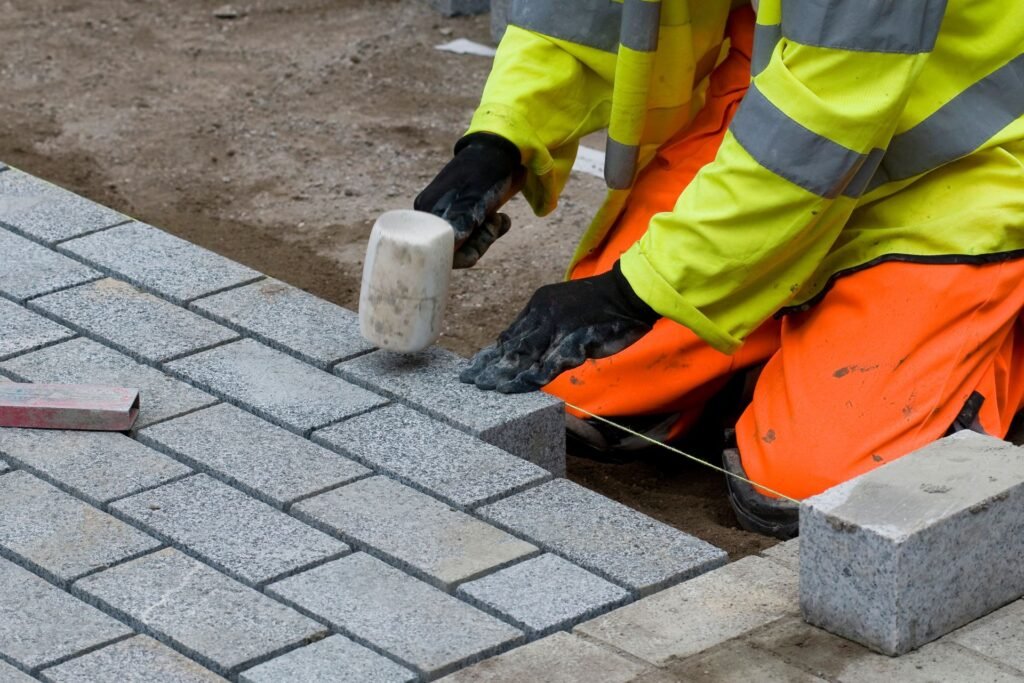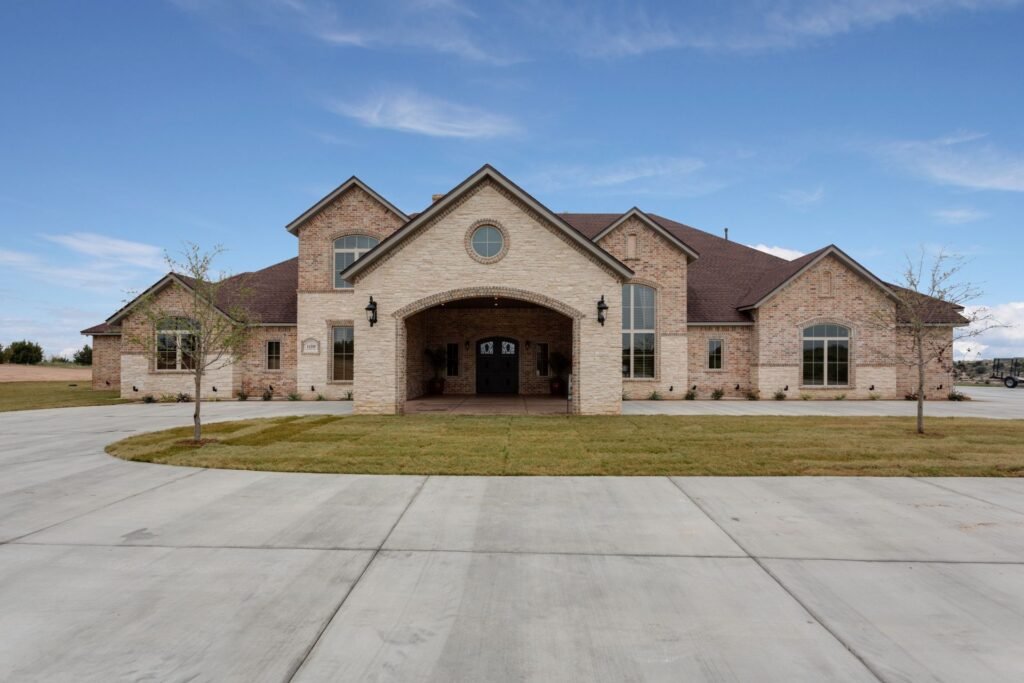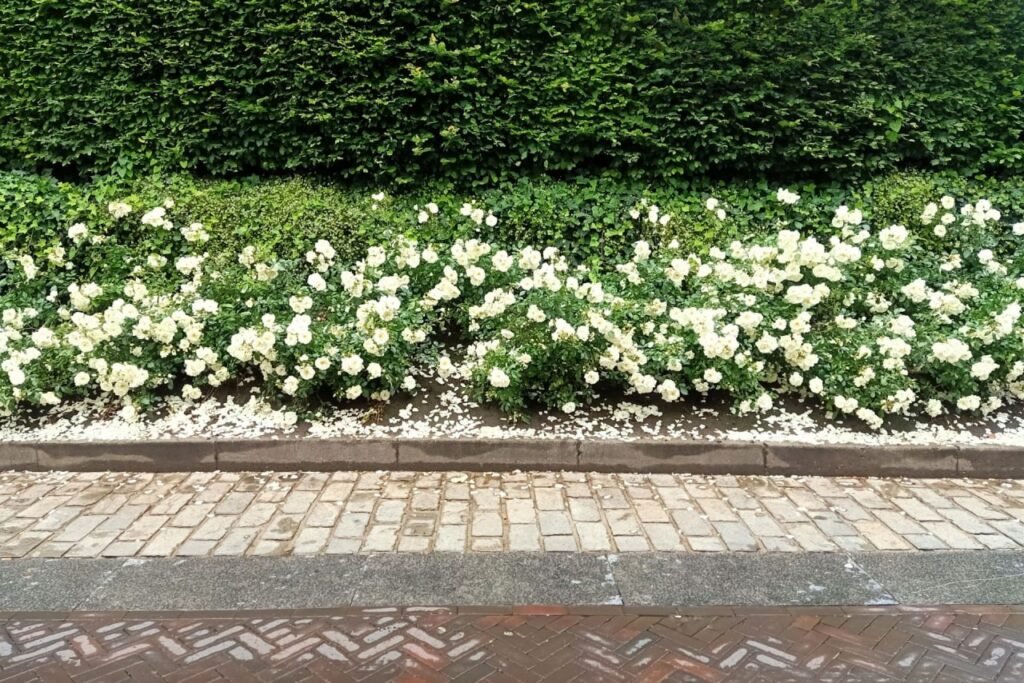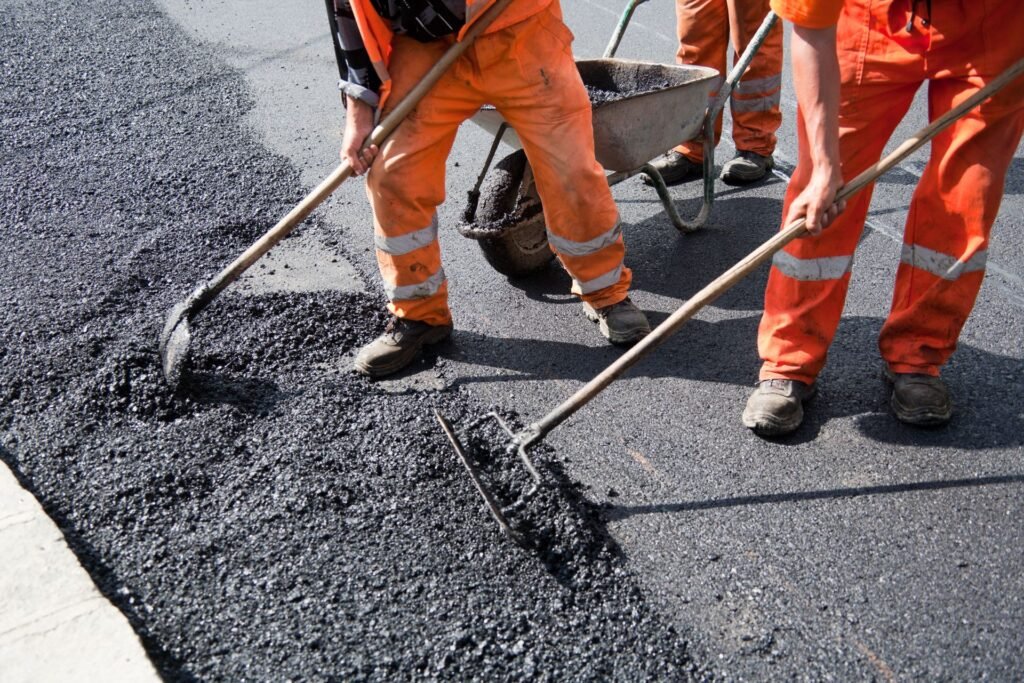Welcome to our comprehensive guide on choosing between concrete slabs and timber floors for your New Zealand home. When it comes to building or renovating, selecting the right flooring is a crucial decision that impacts not only the aesthetics but also the comfort, durability, and overall value of your property. In this blog post, we’ll delve into the benefits and drawbacks of both concrete slabs and timber floors, considering factors like installation, cost, climate suitability, environmental impact, and lifestyle preferences. Our goal is to provide you with the insights and information needed to make an informed choice that best suits your needs and enhances your living space.
Choosing between a concrete slab and a timber floor for your New Zealand home depends on factors like durability, cost, and climate suitability. Concrete slabs offer strength, low maintenance, and thermal mass benefits but can be more expensive and harder underfoot. Timber floors provide natural warmth, aesthetic appeal, and comfort but require regular maintenance and are vulnerable to moisture and pests. Consider your budget, lifestyle, and environmental impact when deciding which flooring option is best for your home.
Table of Contents
Understanding Concrete Slabs
Concrete slabs are fundamental components in many construction projects, offering a sturdy and reliable foundation for buildings, floors, and other structures. A concrete slab is a flat, horizontal surface made from poured concrete. It serves as a foundation, flooring, or structural element in construction.
The composition of a concrete slab typically includes cement, water, aggregates (such as sand, gravel, or crushed stone), and sometimes additional admixtures to enhance specific properties. Cement acts as the binding agent, holding the aggregates together when mixed with water, forming a hard and durable surface once cured.
Installation Process
The installation of a concrete slab involves several key steps, each requiring precision and expertise to ensure a high-quality result. Here’s a general outline of the process.
1. Site Preparation: The site is cleared of debris, and the ground is leveled. Proper drainage is also ensured to prevent future water-related issues.
2. Formwork Construction: Temporary molds, known as formworks, are built to shape and hold the concrete in place until it hardens. These forms are typically made from wood, metal, or plastic.
3. Reinforcement Placement: Reinforcement, such as steel rebar or mesh, is added to the formwork to provide additional strength and prevent cracking.
4. Concrete Mixing and Pouring: The concrete mix is prepared according to the desired specifications and poured into the formwork. The concrete is then evenly spread and leveled using tools like screeds and floats.
5. Curing: The concrete slab is left to cure for a specified period, usually around 28 days. During this time, the concrete gains strength and durability.
6. Finishing: After curing, the formwork is removed, and the slab surface is finished as required, which may include smoothing, texturing, or applying sealants.
Professional skills are crucial at each stage of the installation process to ensure the slab’s integrity and longevity. The timeframe for laying a concrete slab varies depending on the project size and complexity, but it typically ranges from a few days to several weeks.
Advantages of Concrete Slabs
Concrete slabs offer several benefits, making them a popular choice in construction.
- Durability and Strength: Concrete slabs are known for their exceptional durability and strength, capable of withstanding heavy loads and harsh environmental conditions.
- Low Maintenance: Once installed, concrete slabs require minimal maintenance, reducing long-term costs and effort.
- Thermal Mass Properties: Concrete has excellent thermal mass properties, meaning it can absorb and retain heat. This can help regulate indoor temperatures, contributing to energy efficiency in buildings.
- Resistance to Pests and Water Damage: Concrete slabs are resistant to pests such as termites and are less likely to suffer water damage compared to other materials.
Disadvantages of Concrete Slabs
Despite their numerous advantages, concrete slabs also have some drawbacks.
- Higher Initial Cost: The upfront cost of installing a concrete slab can be higher compared to other foundation or flooring options due to materials and labor.
- Longer Installation Time: The installation process for concrete slabs is relatively time-consuming, especially during the curing phase, which can delay project timelines.
- Coldness and Hardness Underfoot: Concrete surfaces can feel cold and hard, which may be uncomfortable for prolonged periods without proper insulation or flooring materials on top.
- Potential for Cracking: Over time, concrete slabs may develop cracks due to various factors such as ground movement, temperature changes, or improper installation. While some cracking is normal, excessive or large cracks can compromise the slab’s structural integrity.
Understanding these aspects of concrete slabs can help homeowners and builders make informed decisions about their construction projects, weighing the benefits and potential challenges associated with this versatile building material.
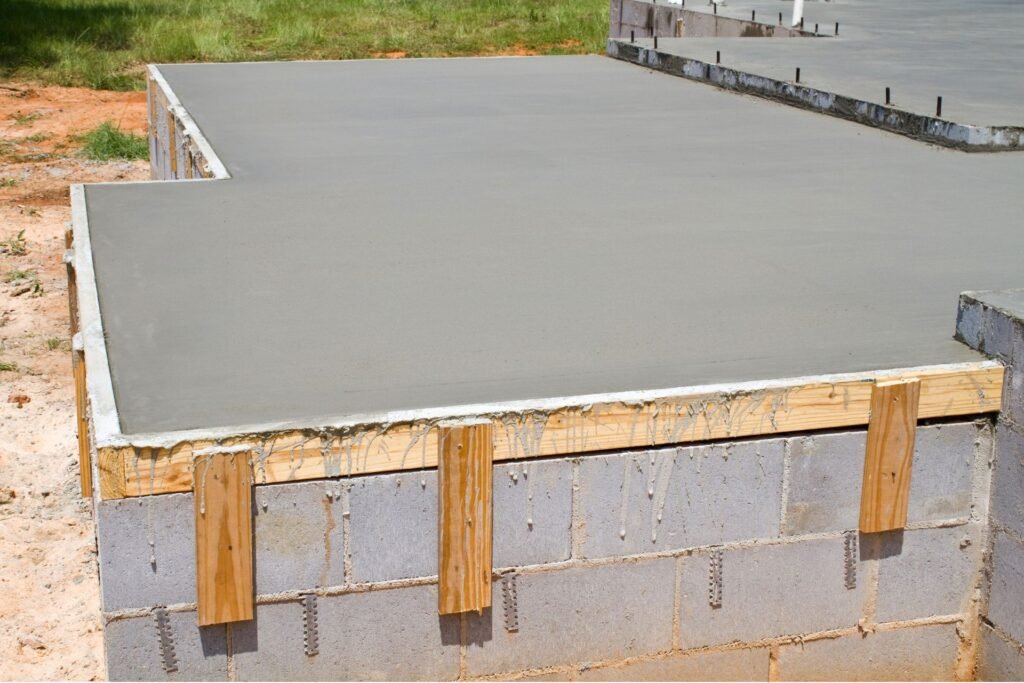
Understanding Timber Floors
What is Timber Flooring
Timber flooring, often referred to as hardwood flooring, is a classic and elegant choice for many homes. It involves the use of timber boards or planks that are milled from natural wood. This type of flooring is prized for its durability, timeless beauty, and the unique character it brings to a space. Each plank of timber flooring has a unique grain pattern, which means no two floors are exactly alike, adding to its appeal.
Different Types of Timber Flooring
Timber flooring comes in several varieties, each offering distinct characteristics and benefits.
- Solid Wood Flooring: This type is made from solid pieces of timber and is known for its strength and longevity. Solid wood floors can be sanded and refinished multiple times, making them a long-term investment. They are available in various wood species, including oak, maple, and cherry, each offering different hardness levels and grain patterns.
- Engineered Wood Flooring: Engineered wood consists of a top layer of real hardwood veneer attached to several layers of plywood or high-density fiberboard. This construction makes it more stable and resistant to changes in temperature and humidity compared to solid wood. Engineered wood is ideal for areas where solid wood might not be suitable, like basements or over concrete subfloors.
- Laminate Flooring: Although not made from real wood, laminate flooring mimics the appearance of timber. It is composed of a photographic layer of wood grain on top of a composite wood base. Laminate flooring is highly durable, scratch-resistant, and more budget-friendly than solid or engineered wood.
Installation Process
Steps Involved in Installing Timber Floors
Installing timber floors involves several meticulous steps to ensure a perfect finish.
1. Preparation: This includes cleaning the subfloor and ensuring it is level and dry. Any existing flooring might need to be removed, and underlayment might be installed for added stability and moisture protection.
2. Acclimatization: Timber planks need to acclimate to the room’s humidity and temperature for a few days before installation to prevent expansion or contraction after they are laid.
3. Layout Planning: This step involves planning the layout of the planks to ensure a pleasing appearance and minimize waste. It’s crucial to measure and mark the starting points.
4. Installation: The actual laying of the floorboards can be done using various methods, such as nailing, stapling, gluing, or floating. The choice of method depends on the type of timber flooring and the subfloor.
5. Finishing Touches: Once the planks are in place, any necessary sanding, staining, and sealing are performed to achieve the desired look and protect the wood.
Required Professional Skills and Timeframe
While some experienced DIY enthusiasts might tackle timber floor installation, it typically requires professional skills for the best results. Professionals ensure the floor is installed correctly and efficiently, often completing the job within a few days, depending on the size of the area and the type of timber flooring.
Advantages of Timber Floors
Timber floors offer numerous benefits that make them a popular choice among homeowners.
- Aesthetic Appeal and Natural Warmth: Timber floors bring a natural, timeless beauty to any home. Their warm tones and unique grain patterns add character and elegance.
- Flexibility in Design and Style: Available in a variety of wood species, stains, and finishes, timber floors can complement any interior design style, from rustic to contemporary.
- Comfort Underfoot: Timber floors are softer and warmer underfoot compared to tiles or stone, making them comfortable to walk on.
- Easier Repairs and Refinishing: Unlike other flooring options, timber floors can be sanded down and refinished multiple times, allowing for easy repairs and the ability to refresh their appearance over the years.
Disadvantages of Timber Floors
Despite their many advantages, timber floors do have some drawbacks.
- Susceptibility to Moisture and Pests: Timber is a natural material and can be prone to damage from moisture and pests. It’s essential to keep them dry and treat them to prevent issues.
- Regular Maintenance Requirements: Timber floors require regular maintenance, including sweeping, mopping, and periodic refinishing, to keep them looking their best.
- Higher Cost of High-Quality Timber: While there are more affordable options, high-quality timber floors can be expensive. This higher initial cost can be a deterrent for some homeowners.
- Potential for Scratches and Dents: Timber floors can be scratched or dented by heavy furniture, high heels, or pets. Using protective pads and being mindful of potential damage can help mitigate this issue.
Understanding the various aspects of timber flooring can help homeowners make informed decisions about their flooring options. While timber floors offer unparalleled beauty and flexibility, they also come with specific maintenance needs and costs. Balancing these factors will ensure you choose the right type of flooring for your home.

Climate Considerations In New Zealand
Concrete Slabs in NZ Climate
Concrete slabs are a popular choice for foundations in New Zealand due to their durability and strength. However, the performance of concrete slabs can vary significantly depending on the region’s climate. New Zealand’s diverse weather patterns mean that concrete slabs must be designed to withstand a range of conditions, from the humid subtropical climate of the Northland to the cooler, temperate climate of the South Island.
How Concrete Slabs Perform in Various NZ Climates
In the warmer, wetter northern regions, concrete slabs benefit from their resistance to moisture. Properly cured and sealed concrete can effectively prevent water infiltration, which is crucial in areas with high rainfall. However, the constant exposure to moisture can lead to potential issues such as mold growth or structural weakening if the concrete is not adequately maintained.
In contrast, the cooler southern regions pose different challenges. Here, temperature fluctuations can cause the concrete to expand and contract, leading to potential cracking. To mitigate this, builders often use expansion joints and proper insulation to ensure the concrete can move without causing damage. Additionally, using high-quality materials and techniques in mixing and curing can enhance the slab’s durability against temperature extremes.
Impact of Moisture and Temperature Fluctuations
Moisture and temperature are two critical factors affecting concrete slabs. High moisture levels, common in many parts of New Zealand, can lead to issues like efflorescence, where salts are drawn to the surface, leaving a white residue. Over time, this can degrade the concrete’s appearance and integrity. To combat this, proper sealing and drainage systems are essential to direct water away from the slab.
Temperature fluctuations, on the other hand, can cause the concrete to expand and contract. In regions with significant temperature changes, this movement can lead to cracking and structural issues. Incorporating reinforcement materials, such as steel rebar or wire mesh, can help absorb these stresses and prolong the slab’s lifespan.
Timber Floors in NZ Climate
Timber floors offer a warm and aesthetically pleasing option for homes in New Zealand. However, their performance is also influenced by the country’s diverse climatic conditions. Understanding how timber reacts to humidity and seasonal changes is crucial for maintaining its beauty and functionality.
How Timber Floors Perform in Various NZ Climates
In humid regions, timber floors are susceptible to moisture absorption, which can cause them to swell and warp. Using hardwoods, which are denser and more resistant to moisture, can mitigate some of these issues. Additionally, applying high-quality finishes and sealants can create a protective barrier, reducing the risk of moisture penetration.
In drier areas, timber floors may shrink and create gaps between the boards. This is particularly noticeable during colder months when indoor heating can reduce humidity levels. To address this, acclimatizing the timber to the local environment before installation is essential. Allowing the wood to adjust to the local humidity levels helps minimize movement once the floor is in place.
Impact of Humidity and Seasonal Changes
Humidity is a significant factor affecting timber floors. High humidity levels can cause the wood to absorb moisture, leading to expansion and potential buckling. Conversely, low humidity can result in the wood losing moisture, causing it to contract and form gaps. Maintaining a stable indoor environment with consistent humidity levels can help preserve the integrity of timber floors.
Seasonal changes also play a role in the performance of timber floors. During winter, increased use of heating systems can lower indoor humidity, causing the timber to dry out and shrink. In summer, higher humidity levels can lead to expansion. Using engineered wood, which combines multiple layers of wood for enhanced stability, can be a practical solution in regions with significant seasonal variations.
Both concrete slabs and timber floors can perform well in New Zealand’s varied climates with proper consideration and maintenance. Understanding the specific challenges posed by moisture, temperature fluctuations, and humidity can help homeowners and builders choose the best materials and techniques to ensure long-lasting, beautiful flooring solutions.

Cost Comparison
Initial Costs
When considering the initial costs of installing flooring, there is a noticeable difference between concrete slabs and timber floors. Concrete slabs generally require a more substantial initial investment. This is due to the labor-intensive process of preparing the ground, pouring the concrete, and allowing it to cure properly. Additionally, concrete often requires reinforcement, which adds to the upfront cost.
On the other hand, timber floors typically involve lower initial costs. The materials are often less expensive, and the installation process is generally quicker and less labor-intensive compared to concrete. However, the type of timber selected can significantly impact the initial cost. Premium hardwoods will be more expensive than softwoods or engineered timber options.
Long-term Costs
The long-term costs associated with both concrete slabs and timber floors are crucial in determining the overall value of your flooring investment.
Maintenance and Repair Costs
Concrete slabs are known for their durability and low maintenance requirements. They are resistant to most types of damage, including water and pests, and do not require frequent repairs. However, when repairs are necessary, they can be costly and time-consuming. Cracks or significant damage to a concrete slab may require professional intervention to fix.
Timber floors, while beautiful and warm, require more maintenance to keep them in top condition. They are susceptible to scratches, dents, and water damage. Regular maintenance, such as sanding and resealing, is necessary to preserve their appearance and structural integrity. Repairs to timber floors are generally more manageable and less expensive than concrete, but they are more frequent.
Energy Efficiency and Insulation Costs
Concrete slabs have excellent thermal mass, which means they can absorb, store, and slowly release heat. This can be beneficial in both winter and summer, potentially reducing heating and cooling costs. However, they can feel cold underfoot in cooler climates unless paired with radiant heating.
Timber floors, on the other hand, offer natural insulation properties, making them a warmer option underfoot. This can reduce the need for additional heating during colder months, potentially leading to energy savings. However, they may not perform as well in retaining cool temperatures during hot weather.
Return on Investment
When evaluating the return on investment (ROI) for concrete slabs versus timber floors, several factors come into play, including potential resale value and longevity.
Potential Resale Value
Both concrete slabs and timber floors can add significant value to a property, but the preference can vary depending on market trends and buyer preferences. Timber floors often appeal to buyers looking for a warm, natural aesthetic. High-quality timber can significantly boost a home’s resale value.
Concrete slabs, particularly polished concrete, have become increasingly popular in modern and minimalist home designs. They can also enhance a property’s resale value, particularly if buyers are seeking low-maintenance and durable flooring options.
Longevity
Concrete slabs are incredibly durable and can last for decades with minimal maintenance. Their longevity is a significant advantage, reducing the need for replacement and providing long-term cost savings.
Timber floors, while durable, may not last as long as concrete without regular maintenance and care. However, high-quality hardwood floors can also last for many years and can be refinished multiple times, extending their lifespan and maintaining their value.
The choice between concrete slabs and timber floors involves weighing the initial costs, long-term expenses, and potential return on investment. Both options offer unique benefits, and the best choice will depend on individual preferences, budget, and the specific needs of your home.
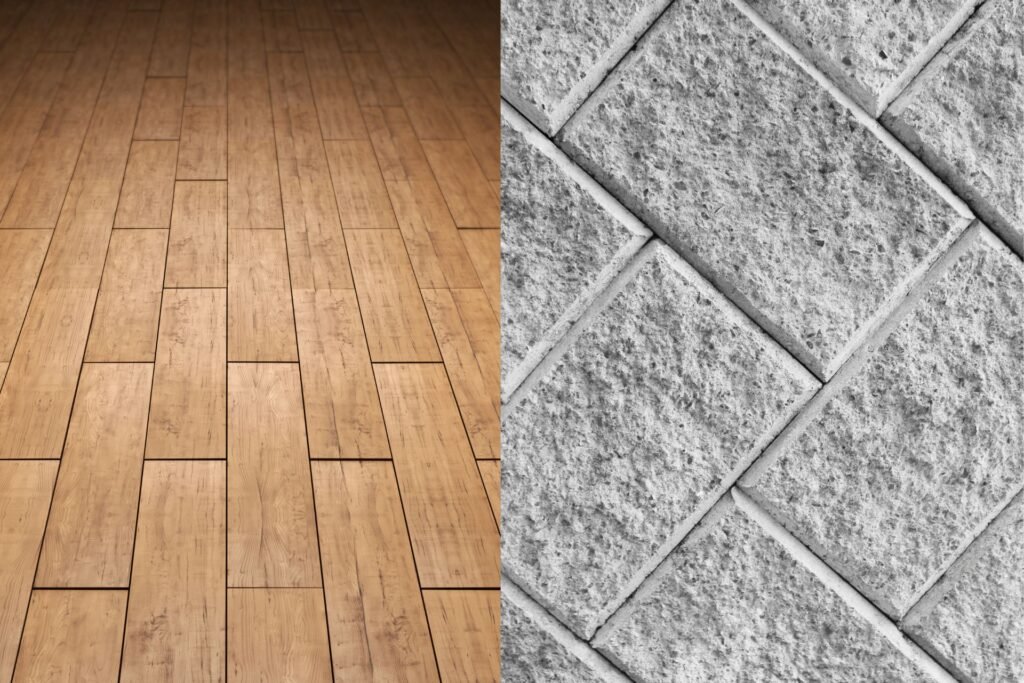
Environmental Impact
When choosing between concrete slabs and timber floors, considering the environmental impact is crucial. Each material has its sustainability factors that can influence your decision.
Sustainability of Concrete Slabs
Environmental Footprint of Concrete Production
Concrete is a widely used construction material due to its durability and versatility. However, its production has a significant environmental footprint. The process of making concrete involves extracting raw materials like limestone, which is then heated at high temperatures to produce cement. This process releases a substantial amount of carbon dioxide (CO2) into the atmosphere. In fact, cement production alone is responsible for approximately 8% of global CO2 emissions. The extraction and transportation of raw materials also contribute to the environmental impact, including habitat destruction and energy consumption.
Recyclability and Potential for Green Building Certifications
Despite its high carbon footprint, concrete can contribute to sustainable building practices. One of its key advantages is its recyclability. Old concrete can be crushed and reused as aggregate for new concrete, reducing the need for new raw materials and minimizing waste. Additionally, buildings constructed with concrete can achieve green building certifications such as LEED (Leadership in Energy and Environmental Design) due to its thermal mass properties, which can enhance energy efficiency. Moreover, advancements in concrete technology, such as the development of low-carbon and carbon-neutral concrete, are paving the way for more sustainable construction practices.
Sustainability of Timber Floors
Source and Sustainability of Timber
Timber, being a natural and renewable resource, has a different set of environmental considerations. The sustainability of timber flooring largely depends on the source of the timber. Responsibly sourced timber, harvested from well-managed forests, can be a highly sustainable option. Forest Stewardship Council (FSC) certification ensures that the timber comes from forests that are managed sustainably, protecting biodiversity and ensuring that logging practices do not lead to deforestation. Additionally, timber plantations specifically grown for harvesting can be managed to maintain ecological balance.
Impact of Deforestation and Carbon Footprint
One of the critical environmental concerns with timber is deforestation. Unsustainable logging practices can lead to significant ecological damage, including loss of biodiversity, disruption of water cycles, and increased carbon emissions. Forests act as carbon sinks, absorbing CO2 from the atmosphere, and their destruction releases this stored carbon. However, when sourced responsibly, timber can have a lower carbon footprint compared to concrete. Timber production generally requires less energy and produces fewer greenhouse gas emissions than the production of concrete.
Benefits of Using Reclaimed or Certified Timber
Using reclaimed or certified timber can further enhance the sustainability of timber floors. Reclaimed timber, salvaged from old buildings or other sources, reduces the demand for new timber and minimizes waste. This practice also preserves the character and history of the wood. Certified timber ensures that the wood comes from forests that are managed sustainably, protecting ecosystems and supporting local communities. Additionally, timber floors can store carbon throughout their lifespan, acting as a carbon sink and contributing to the reduction of atmospheric CO2 levels.
Both concrete slabs and timber floors have their environmental pros and cons. Concrete’s high carbon footprint can be offset by its recyclability and potential for green certifications. Timber, when sourced sustainably, offers a renewable option with a lower carbon footprint. By choosing responsibly sourced materials and considering the full lifecycle impact, you can make an informed decision that aligns with your environmental values.
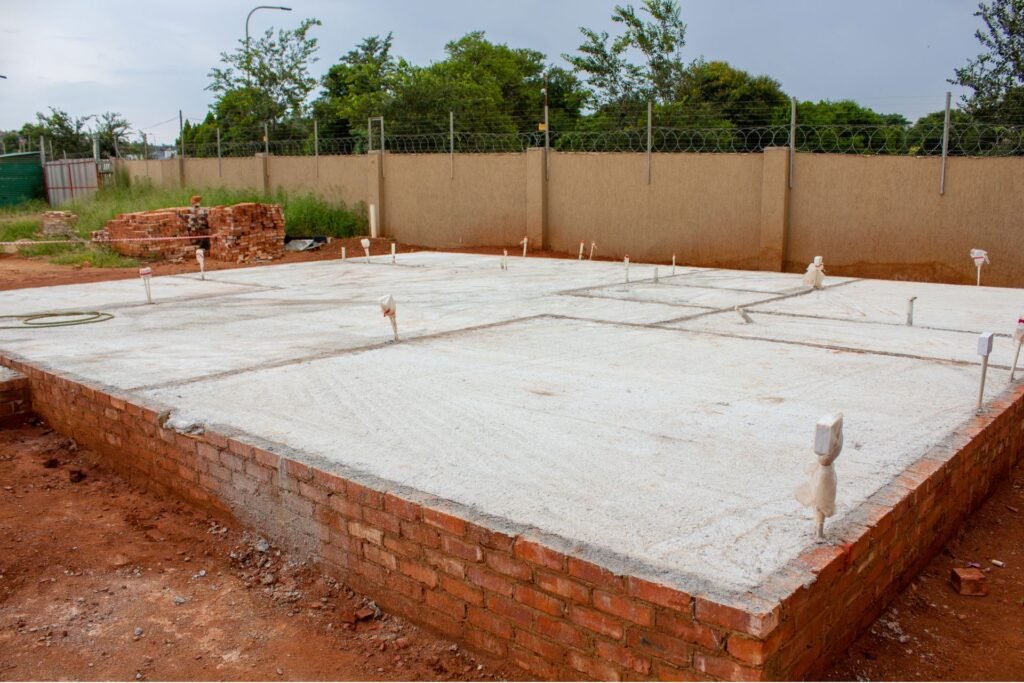
Lifestyle And Aesthetic Preferences
When deciding between concrete slabs and timber floors for your home, lifestyle and aesthetic preferences play a significant role. Each flooring option offers unique benefits that cater to different tastes and daily living requirements.
Aesthetic Appeal
Visual Impact of Concrete Slabs vs. Timber Floors
Concrete slabs and timber floors provide distinct visual impacts that can transform the look and feel of your home. Concrete slabs offer a sleek, modern appearance that suits contemporary and industrial interior design styles. Their smooth, polished finish can create a minimalist aesthetic, making them an excellent choice for open-plan spaces and urban lofts.
On the other hand, timber floors exude warmth and natural beauty. They bring an organic, timeless charm to any room, making them perfect for traditional, rustic, or Scandinavian design styles. The variety of wood types and finishes available means you can achieve anything from a light, airy look to a rich, dark elegance.
Suitability for Different Interior Design Styles
Concrete slabs seamlessly blend with modern and industrial styles due to their clean lines and neutral color palette. They complement metal, glass, and minimalist furniture, creating a cohesive, sophisticated look. Additionally, concrete can be stained or colored to match specific design schemes, providing versatility.
Timber floors, however, are incredibly versatile and can adapt to numerous design styles. They harmonize with classic, rustic, coastal, and even modern interiors. The natural grain and texture of wood add character and warmth, enhancing the coziness and inviting atmosphere of a space.
Comfort and Lifestyle
Daily Living Comfort
Comfort is a crucial factor when choosing flooring, as it affects your daily living experience. Concrete slabs are hard and unforgiving, which might not be the best choice for areas where you spend a lot of time standing or walking. However, they are excellent for radiant floor heating systems, providing a warm surface underfoot during colder months.
Timber floors, conversely, are naturally warmer and softer than concrete. They offer a comfortable surface to walk on, making them ideal for living rooms, bedrooms, and other areas where comfort is paramount. Wood floors also have a slight give, which can be easier on your joints compared to the hardness of concrete.
Suitability for Families, Pets, and High-Traffic Areas
For families with children and pets, the durability and maintenance of flooring are essential considerations. Concrete slabs are highly durable and resistant to scratches, stains, and moisture, making them suitable for high-traffic areas and households with pets. Their seamless surface is easy to clean and maintain, which is a significant advantage for busy families.
Timber floors, while durable, can be more susceptible to scratches and dents, particularly in high-traffic areas or homes with pets. However, high-quality timber and proper maintenance can enhance their longevity. Timber floors are also easier to repair and refinish than concrete, allowing for spot treatments and refinishing to keep them looking their best.
Acoustic Properties
Noise Insulation and Sound Absorption
Acoustic properties are often overlooked but are essential for a comfortable home environment. Concrete slabs have excellent noise insulation properties, reducing the transmission of sound between floors. This makes them ideal for multi-story homes or apartments where noise control is necessary. However, concrete can amplify sounds within a room, leading to echoes and a less cozy feel.
Timber floors, while not as effective at blocking noise between floors, provide better sound absorption within a room. The natural fibers in wood help to dampen sounds, reducing echoes and creating a quieter, more comfortable living space. This quality makes timber floors a preferred choice for bedrooms, living rooms, and other areas where acoustics are important.
The choice between concrete slabs and timber floors depends on your aesthetic preferences, lifestyle needs, and the specific requirements of your living space. Both options offer unique benefits that can enhance the comfort and style of your home, ensuring that you select the best flooring for your personal taste and daily living experience.

Case Studies And Real-Life Examples
When it comes to choosing between concrete slab and timber floor homes in New Zealand, nothing beats learning from real-life examples and case studies. Understanding how these choices play out in actual homes can provide invaluable insights. Here, we delve into some concrete slab and timber floor homes in NZ, sharing homeowners’ experiences and testimonials to give you a clearer picture of what to expect.
Concrete Slab Homes in NZ
Concrete slab floors are popular in New Zealand for their durability and thermal efficiency. Let’s look at some examples of homes with concrete slab floors and what homeowners have to say about them.
Example 1: The Modern Family Home in Auckland
This modern family home in Auckland features a polished concrete slab floor. The homeowners chose this option for its sleek appearance and ease of maintenance. They found that the concrete slab not only added to the contemporary aesthetic but also helped in keeping the home cool during the summer and retaining warmth in the winter.
Homeowner Testimonial
“We love our polished concrete floor. It’s incredibly easy to clean and maintain, and it adds a unique touch to our modern home. The thermal properties of the concrete have also been a significant benefit, making our home more comfortable year-round.” – Sarah and James, Auckland.
Example 2: Sustainable Living in Wellington
A couple in Wellington built their dream home with a focus on sustainability. They opted for a concrete slab floor due to its longevity and minimal environmental impact. By incorporating underfloor heating, they maximized the thermal mass of the concrete, achieving excellent energy efficiency.
Homeowner Testimonial
“Choosing a concrete slab floor was part of our commitment to sustainability. It’s durable, and with the underfloor heating, our home stays warm and cozy without racking up high energy bills. It was definitely the right choice for us.” – Emma and Liam, Wellington.
Timber Floor Homes in NZ
Timber floors are cherished for their natural beauty and warmth. Here are some examples of homes with timber floors and the experiences of those who live in them.
Example 1: The Heritage Home in Christchurch
This heritage home in Christchurch showcases beautiful native timber flooring that adds to its charm and character. The homeowners decided to restore and maintain the original timber floors during renovations to preserve the house’s historical value. They found that the timber floors provided a warm and inviting atmosphere.
Homeowner Testimonial
“Restoring the original timber floors was a labor of love, but it was worth it. The warmth and character that timber floors bring to our home are unmatched. It’s a part of the house’s history that we’re proud to maintain.” – Helen and Mark, Christchurch.
Example 2: Coastal Retreat in Tauranga
A family in Tauranga built a coastal retreat with wide plank timber flooring throughout the home. They chose timber for its natural feel and the way it complements their beachside location. The homeowners appreciate how the timber floors enhance the aesthetic of their home and provide a cozy, homely feel.
Homeowner Testimonial
“Our timber floors are perfect for our coastal home. They add a natural, rustic feel that fits perfectly with our surroundings. Plus, they’re incredibly comfortable to walk on, and we love the warmth they bring to our space.” – Sophie and Andrew, Tauranga.
By examining these case studies and testimonials, you can see how concrete slab and timber floors perform in real New Zealand homes. Concrete slabs offer durability and thermal efficiency, while timber floors provide natural beauty and warmth. Understanding the experiences of other homeowners can help you make an informed decision for your own home, ensuring it meets your needs and preferences.
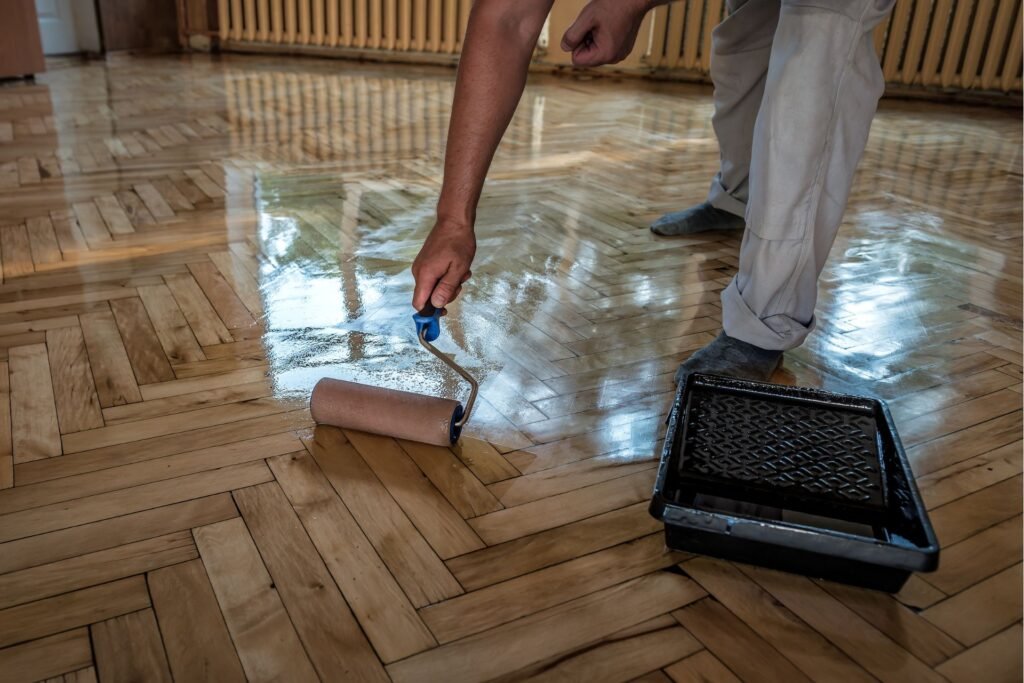
Expert Opinions
Interviews with Builders and Architects
Gaining insights from professionals is crucial when deciding between concrete slab and timber flooring for your home. Builders and architects bring a wealth of experience and knowledge to the table, offering valuable perspectives on the pros and cons of each flooring type. Here’s what some of the experts have to say.
Insights from Professionals on the Pros and Cons of Each Flooring Type
Concrete Slab
According to experienced builders, concrete slabs offer several significant advantages. One of the primary benefits is durability. Concrete is incredibly robust and can withstand heavy loads and impacts, making it an ideal choice for areas with high foot traffic or where heavy furniture and appliances are used. Builders also highlight the thermal mass properties of concrete. This means it can absorb, store, and slowly release heat, contributing to energy efficiency by maintaining stable indoor temperatures.
However, there are some downsides to consider. Architects point out that concrete slabs can be cold and hard underfoot, which might not be ideal for living spaces where comfort is a priority. Additionally, any structural changes or repairs to plumbing and wiring can be challenging and costly with concrete flooring, as it requires breaking through the slab.
Timber Flooring
Builders and architects often praise timber flooring for its aesthetic appeal and natural warmth. Timber brings a touch of elegance and coziness to any home, and its variety of styles and finishes can complement both traditional and modern interiors. Experts also note that timber is more forgiving underfoot, providing a softer and warmer surface, which is particularly beneficial in living areas and bedrooms.
On the downside, professionals caution that timber floors require more maintenance compared to concrete. Timber is susceptible to scratches, dents, and moisture damage, which means homeowners need to be diligent about upkeep and choose the right type of timber for different areas of the home. Additionally, timber flooring can be less durable in high-traffic areas and might need refinishing or replacement over time.
Recommendations Based on Different Home Construction Scenarios
For Modern Homes with Open Plans
Architects often recommend concrete slabs for modern homes with open floor plans. The sleek and seamless look of polished concrete fits well with contemporary design aesthetics. Additionally, the thermal mass properties of concrete can enhance energy efficiency, particularly in homes with large windows and passive solar designs.
For Traditional and Cozy Interiors
In contrast, builders suggest timber flooring for traditional and cozy interiors. The natural look and feel of timber can enhance the charm of rustic or classic home designs. Timber’s insulating properties also provide a warmer atmosphere, making it a preferred choice for living areas and bedrooms.
For Homes in Humid or Wet Climates
Experts recommend concrete slabs for homes located in humid or wet climates. Concrete is less susceptible to moisture damage compared to timber, making it a more practical choice in areas where humidity levels are high or where flooding is a concern.
For Homes with Active Families or Pets
Builders advise that active families or homes with pets might benefit more from concrete flooring. The durability and ease of cleaning make concrete a low-maintenance option that can withstand the wear and tear from kids and pets running around.
By consulting with builders and architects, homeowners can gain a comprehensive understanding of the benefits and drawbacks of both concrete slab and timber flooring. These professional insights can guide you in making an informed decision that suits your home’s style, climate, and lifestyle needs.
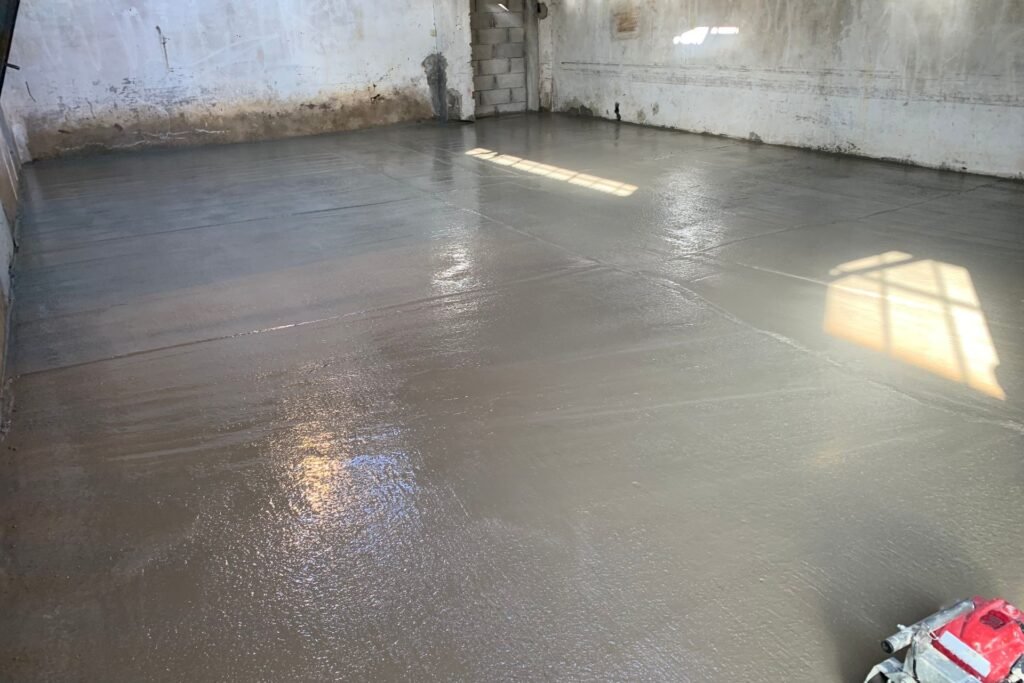
Making Your Decision
When it comes to choosing between concrete slabs and timber floors for your home or project, the decision can be complex. Both options have their unique benefits and potential drawbacks. To help you make an informed choice, let’s recap the key factors to consider, emphasize the importance of personal preferences and priorities, and discuss the value of consulting with professionals.
Factors to Consider
- Durability and Longevity: Concrete slabs are known for their durability and longevity. They can withstand heavy loads and are resistant to fire, rot, and termites. On the other hand, timber floors can be susceptible to damage from moisture, pests, and general wear and tear, though they can also be maintained and repaired over time.
- Aesthetics and Comfort: Timber floors offer a warm, natural look that many homeowners find appealing. They add character and a sense of coziness to a space. Concrete slabs, while more industrial in appearance, can be polished or stained to create a variety of looks. They tend to be cooler underfoot, which can be a plus in warmer climates but less desirable in colder areas.
- Cost and Installation: The initial cost of concrete slabs is typically higher due to the materials and labor involved in their installation. However, they often require less maintenance over time. Timber floors may be less expensive upfront but can incur additional costs for maintenance and potential repairs.
- Environmental Impact: Timber is a renewable resource, but it’s important to consider the source. Sustainable forestry practices can mitigate environmental impact. Concrete production, on the other hand, has a significant carbon footprint, though advances in technology are helping to reduce this.
- Insulation and Energy Efficiency: Timber floors generally provide better insulation than concrete slabs, helping to keep homes warmer in cold weather. Concrete slabs can be enhanced with insulation materials but may still feel colder underfoot.
Personal Preferences and Priorities
Ultimately, the choice between concrete slabs and timber floors comes down to your personal preferences and priorities. Consider what aspects are most important to you and your lifestyle. Do you value the natural beauty and warmth of timber, or do you prefer the durability and low maintenance of concrete? Think about your budget, the climate you live in, and how each option aligns with your aesthetic preferences and practical needs.
Consulting with Professionals
Making a final decision can be challenging, and consulting with professionals can provide invaluable insights. Builders and architects have the expertise to assess your specific situation and offer personalized advice. They can help you understand the implications of each option, taking into account factors such as soil conditions, structural requirements, and local building codes.
By thoroughly considering these factors, weighing your own preferences, and seeking professional guidance, you can make a well-informed decision that best suits your needs and enhances your living space.
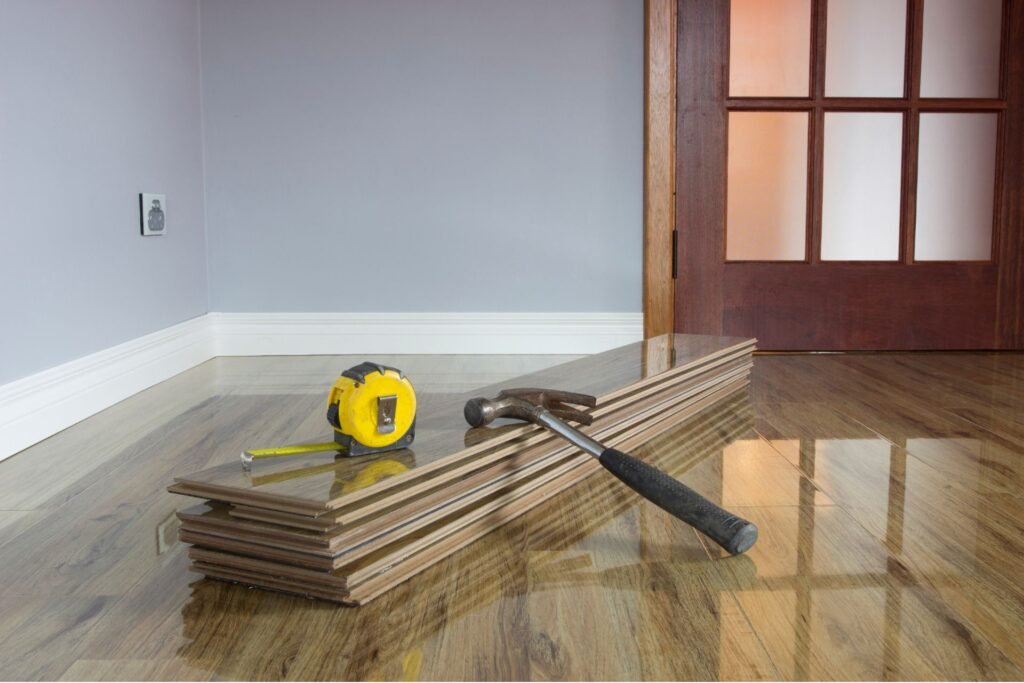
FAQs: About Concrete Slab Vs Timber Floor NZ
What are the main differences between concrete slab and timber floor?
Concrete slabs are known for their durability, strength, and low maintenance, while timber floors offer aesthetic appeal, natural warmth, and comfort. Concrete is resistant to pests and water damage, whereas timber can be vulnerable to moisture and requires regular maintenance.
How does the cost of concrete slabs compare to timber floors?
The initial cost of concrete slabs is typically higher than timber floors due to the materials and labor involved. However, concrete slabs have lower long-term maintenance costs. Timber floors can be more affordable upfront but may incur higher maintenance and repair costs over time.
Which flooring type is better suited for New Zealand’s climate?
Concrete slabs perform well in various New Zealand climates, providing thermal mass benefits that help regulate indoor temperatures. Timber floors are also suitable but may require more attention to moisture control and seasonal changes to prevent warping and damage.
What are the installation processes for concrete slabs and timber floors?
Installing a concrete slab involves preparing the site, pouring and leveling the concrete, and allowing it to cure. Timber floor installation includes preparing the subfloor, laying the timber planks, and securing them in place. Both processes require professional skills and have different timeframes.
How does each flooring type impact the environment?
Concrete production has a higher environmental footprint due to the energy and materials required, but concrete is durable and recyclable. Timber floors can be more sustainable if sourced from certified or reclaimed wood, but deforestation and carbon footprint are considerations.
What are the maintenance requirements for concrete slabs and timber floors?
Concrete slabs are low maintenance, requiring occasional cleaning and sealing to prevent staining. Timber floors need regular cleaning, refinishing, and protection against moisture and pests to maintain their appearance and longevity.
Can I install underfloor heating with both flooring types?
Yes, underfloor heating can be installed with both concrete slabs and timber floors. Concrete slabs are particularly well-suited for underfloor heating due to their thermal mass properties, while timber floors can also accommodate underfloor heating with proper installation techniques.
How do concrete slabs and timber floors affect indoor air quality?
Concrete slabs do not harbor dust, allergens, or mold, contributing to better indoor air quality. Timber floors can also maintain good air quality if properly sealed and maintained, but they may be more susceptible to moisture-related issues that can impact air quality.
What are the acoustic properties of concrete slabs and timber floors?
Concrete slabs can be noisier due to their hardness, but soundproofing materials can be added to improve acoustics. Timber floors generally provide better sound absorption, creating a quieter and more comfortable living environment.
Which flooring type offers better resale value for homes in New Zealand?
Both concrete slabs and timber floors can add value to a home, but it depends on buyer preferences and the overall design of the property. High-quality, well-maintained timber floors are often seen as a desirable feature, while concrete slabs are valued for their durability and low maintenance.
Conclusion
In conclusion, the key points discussed in this blog post emphasize the various considerations when choosing the right option for your needs, be it materials, methods, or services. It is crucial to understand that making an informed decision tailored to your specific circumstances can significantly impact the outcome and satisfaction of your project. By weighing the pros and cons, consulting experts, and thoroughly researching your options, you can ensure the best results. We invite you to share your own experiences, insights, and any questions you might have in the comments section below, fostering a community of shared knowledge and support.
About the Author:
Mike Veail is a recognized digital marketing expert with over 6 years of experience in helping tradespeople and small businesses thrive online. A former quantity surveyor, Mike combines deep industry knowledge with hands-on expertise in SEO and Google Ads. His marketing strategies are tailored to the specific needs of the trades sector, helping businesses increase visibility and generate more leads through proven, ethical methods.
Mike has successfully partnered with numerous companies, establishing a track record of delivering measurable results. His work has been featured across various platforms that showcase his expertise in lead generation and online marketing for the trades sector.
Learn more about Mike's experience and services at https://theleadguy.online or follow him on social media:




